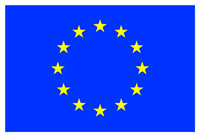WG 3: Metal bioconjugates for targeting and delivery
Working Group Coordinator: Anna Peacock, University of Birmingham, United Kingdom
Topic: Instead of targeting specific biomolecular binding sites, metal-based drugs can also be delivered to their designated site of action by attaching receptor-specific targeting vectors. In general, by choosing appropriate targeting vectors such as peptides, nucleic acids, anti-metabolites, drugs or other bioactive vehicles, specific cell compartments (e.g. mitochondria, nuclei) can be addressed. The biological distribution processes are strongly influenced by the nature of the metal ion or metal complex due to the involvement of metal-specific transporter systems. Relevant examples include ruthenium species that are transported via transferrin receptors. Many organometallic species display favourable properties based on their biological stability and thereby provide optimized structural elements for combining metals with appropriate targeting vectors. The metal bioconjugates will be based on the multi-modality concept. Ideally, they contain a bioactive moiety which targets specific cell membrane receptors for selective cell uptake as the first modality. This will initiate preferential uptake at sites with enhanced expression of this particular receptor. After receptor-mediated endocytosis, they comprise as a second modality a structural feature which targets e.g. the enzyme, tightly binds to it and exerts the action of the metal complex. It is of utmost interest for later application to not only have a therapeutic but also a diagnostic option. On the in vitro level, fluorescence markers can support the detection of cellular distribution of the conjugates within the micro-compartments of the cell. Elucidation of quantitative distribution of multimodality compounds within the cell by e.g. fluorescence markers will facilitate a better understanding of the mode of action of the metallo-drug. Accordingly, radiolabelling will allow for in vivo imaging, thus, the success or failure of a therapy can be imaged non-invasively. Ideally, the therapeutic and the diagnostic compounds are structurally identical. These multi-modality type metal bioconjugates for targeting and delivery can conceptually be applied to all targets within the scope of this Action. Within this WG, the design, syntheses, biological behaviour and physicochemical properties of such bioconjugates will be evaluated.

 COST is supported by the EU Framework Programme Horizon 2020
COST is supported by the EU Framework Programme Horizon 2020